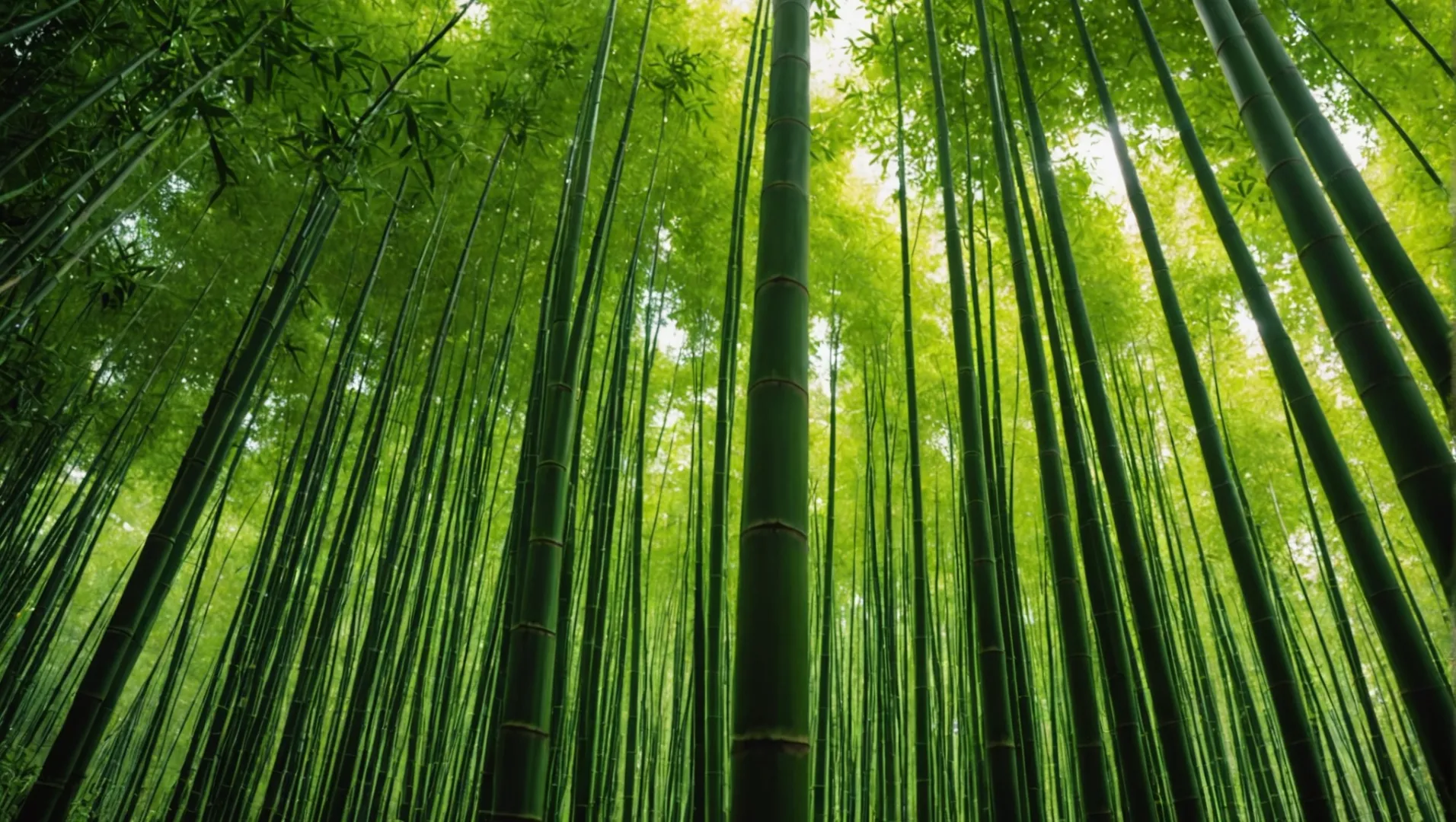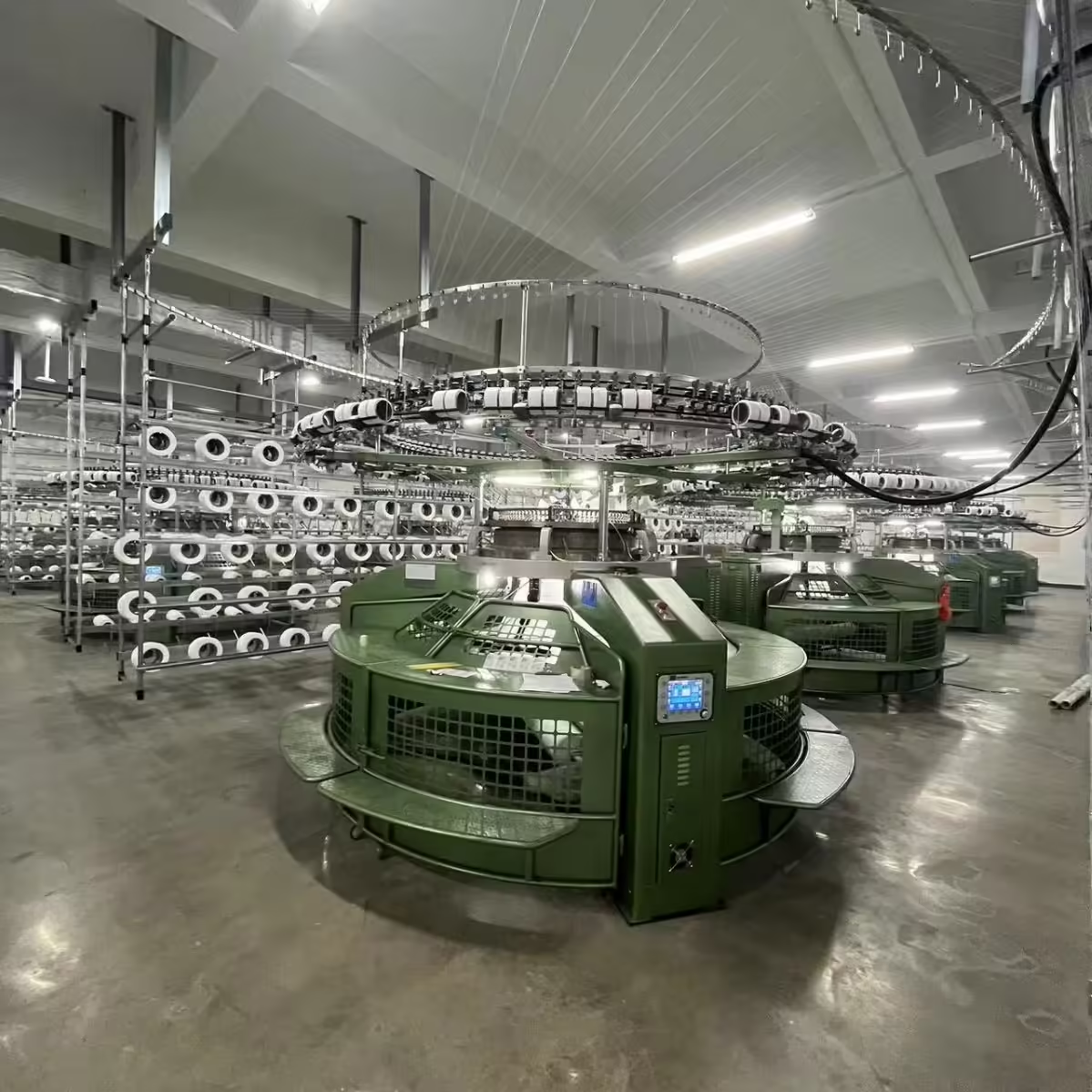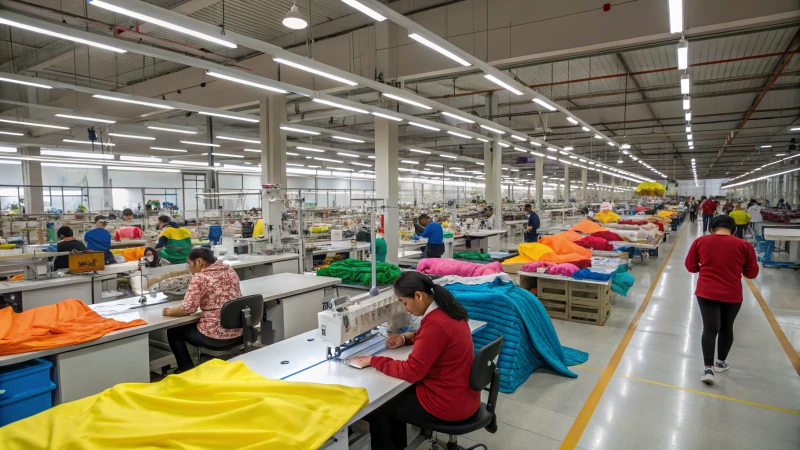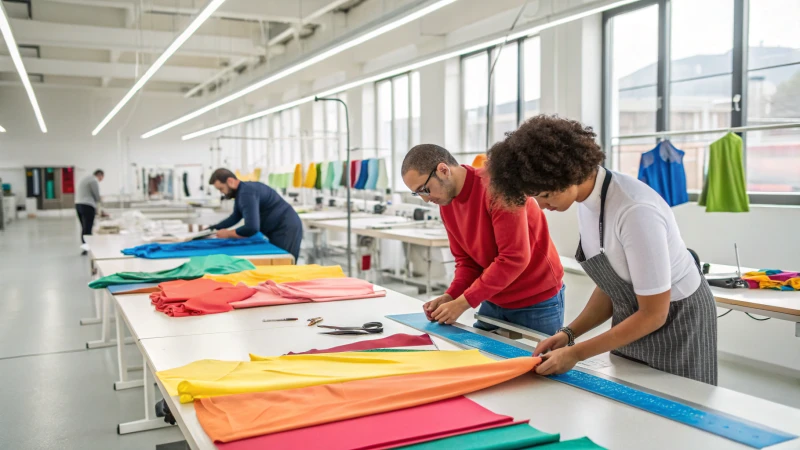
Ever wondered how bamboo transforms into the soft fabric of your underwear?
The process of making bamboo underwear involves several steps: harvesting mature bamboo, processing it into pulp, converting the pulp into fiber through mechanical or chemical methods, spinning the fiber into yarn, knitting and dyeing the fabric, and finally cutting and sewing the finished product.
While this provides a brief overview, there's much more to uncover about bamboo underwear. From understanding its eco-friendly benefits to exploring the differences between processing methods, delve deeper into why bamboo is a sustainable choice for clothing.
Bamboo underwear is made using only mechanical processing.False
Chemical processing is more common than mechanical in bamboo fabric production.
How Sustainable is Bamboo as a Resource?
Bamboo is touted as an eco-friendly resource, but how sustainable is it truly?
Bamboo's sustainability stems from its rapid growth, minimal need for pesticides, and potential for carbon sequestration. However, the environmental impact of processing methods and monoculture farming practices can challenge its eco-friendly reputation.

Rapid Growth and Regeneration
Bamboo is renowned for its fast growth rate1, with some species growing up to 91 cm (35 inches) in a single day. This rapid growth allows it to be harvested frequently without causing long-term damage to the environment. Unlike trees, which take decades to mature, bamboo can reach maturity in just three to five years.
Minimal Pesticide Use
One of the key environmental benefits of bamboo is its minimal need for pesticides and fertilizers. Bamboo naturally resists pests and diseases, reducing the reliance on harmful chemicals that can leach into soil and water sources.
Carbon Sequestration
Bamboo plays a significant role in carbon sequestration2. It absorbs carbon dioxide at a higher rate than many other plants, contributing to reducing greenhouse gases. This ability makes bamboo plantations valuable in combating climate change.
Environmental Challenges in Processing
Despite its natural advantages, the environmental sustainability of bamboo can be compromised during processing. The chemical methods3 used to convert bamboo into fibers, such as the viscose process, involve toxic chemicals like sodium hydroxide. These processes can lead to pollution if not managed properly.
Monoculture Concerns
While bamboo's rapid growth is advantageous, extensive monoculture plantations pose ecological concerns. These plantations can reduce biodiversity and increase vulnerability to pests and diseases if not managed sustainably. Integrating bamboo cultivation into existing ecosystems or using agroforestry approaches can mitigate these issues.
Comparing with Other Resources
When compared to other resources like cotton or synthetic fibers, bamboo often comes out ahead due to its sustainable attributes4. Cotton, for example, requires significant water and pesticide use, whereas synthetic fibers are petroleum-based and non-biodegradable.
| Resource | Growth Time | Pesticide Use | Water Use | Carbon Sequestration |
|---|---|---|---|---|
| Bamboo | 3-5 years | Low | Low | High |
| Cotton | 5-6 months | High | High | Moderate |
| Polyester | N/A | N/A | Low | Low |
Understanding these factors helps underscore bamboo's potential as a sustainable resource when responsibly cultivated and processed.
Bamboo grows up to 91 cm in a single day.True
Certain bamboo species can grow this fast, showcasing rapid regeneration.
Bamboo plantations always increase biodiversity.False
Monoculture bamboo plantations can reduce biodiversity if not managed well.
What Are the Environmental Impacts of Bamboo Fabric Production?
Bamboo fabric is touted for its eco-friendly reputation, but what are the actual environmental impacts of its production?
The environmental impact of bamboo fabric production varies significantly depending on the processing method used. While bamboo itself is a sustainable plant due to its rapid growth and minimal need for pesticides, the chemical processes often used to convert it into fabric can be harmful, involving toxic chemicals that may pollute water sources.

Understanding the Dual Nature of Bamboo's Environmental Impact
Bamboo, as a resource, has garnered much attention for its rapid growth and sustainability. It grows quickly without the need for fertilizers or pesticides and sequesters carbon effectively. However, the transition from plant to fabric introduces complexities that affect its environmental footprint.
1. Mechanical vs. Chemical Processing
Mechanical Processing:
- This method involves crushing bamboo and using natural enzymes to break down fibers. It's considered more eco-friendly as it avoids harmful chemicals, resulting in a textile similar to linen.
- Despite its benefits, mechanical processing is less common due to higher costs and labor intensity.
Chemical Processing (Viscose/Rayon):
- The more prevalent method, it involves treating bamboo pulp with chemicals like sodium hydroxide and carbon disulfide.
- These chemicals can pose environmental hazards if not managed properly, potentially contaminating water sources and harming aquatic life.
| Aspect | Mechanical Process | Chemical Process |
|---|---|---|
| Use of Chemicals | Minimal | High (sodium hydroxide, carbon disulfide) |
| Cost and Labor | High | Lower |
| Environmental Impact | Low | Potentially high |
2. Water Usage and Pollution
Bamboo's natural cultivation does not require irrigation, which is a positive aspect. However, the chemical processes can lead to significant water pollution if effluents are not treated properly before being released.
3. Energy Consumption
The energy required for processing varies with the method:
- Mechanical processing uses more mechanical energy but less heat and chemical energy.
- Chemical processing is often energy-intensive, increasing its carbon footprint.
Striking a Balance: Innovations and Sustainable Practices
Recent innovations aim to minimize the negative impacts of bamboo fabric production:
- Development of closed-loop systems that recycle water and chemicals can mitigate pollution.
- Investment in greener technologies and more efficient mechanical processes could reduce reliance on harmful chemicals.
To truly harness bamboo's sustainability, consumers and manufacturers need to push for transparency in production practices. Choosing brands that prioritize eco-friendly methods will promote more sustainable production practices over time. By understanding these nuances, we can make informed choices that support both fashion and the environment.
Mechanical processing of bamboo is more eco-friendly.True
It avoids harmful chemicals, reducing environmental impact.
Chemical processing of bamboo uses no toxic chemicals.False
It involves sodium hydroxide and carbon disulfide, which are harmful.
Why Choose Bamboo Underwear Over Other Fabrics?
Are you curious about why bamboo underwear is gaining popularity over traditional fabrics?
Bamboo underwear stands out for its softness, breathability, and moisture-wicking properties, making it ideal for sensitive skin. Additionally, bamboo is a renewable resource that grows rapidly without pesticides, offering an eco-friendly alternative to synthetic fabrics.

The Comfort Factor
When it comes to comfort, bamboo underwear excels due to its unique properties. The fibers are naturally smooth and round, resulting in a fabric that is exceptionally soft against the skin. This makes bamboo underwear a preferred choice for individuals with sensitive skin or those prone to allergies. Compared to cotton, bamboo offers better moisture-wicking capabilities, keeping you dry and comfortable throughout the day.
Environmental Benefits
Bamboo is often touted as an eco-friendly resource. It grows quickly, sometimes up to three feet in a single day, and requires minimal water compared to cotton. Plus, it doesn’t need fertilizers or pesticides, reducing the overall environmental impact of its cultivation. Although the chemical process used in transforming bamboo into fabric can be a concern, advancements are being made toward more sustainable production methods. To learn more about these innovations, check out sustainable bamboo fabric production5.
Durability and Longevity
Another compelling reason to opt for bamboo underwear is its durability. Bamboo fibers are strong and resilient, allowing them to withstand frequent washing without losing shape or softness. This longevity means you’ll replace your underwear less often, contributing to a more sustainable wardrobe over time.
Breathability and Temperature Regulation
Bamboo fabric’s natural breathability allows air to flow easily, keeping you cool in summer and warm in winter. This temperature-regulating property is not just comfortable but also beneficial for maintaining hygiene and freshness.
Antibacterial Properties
One of the standout features of bamboo underwear is its natural antibacterial properties. The bamboo plant contains an antimicrobial bio-agent called "bamboo kun," which remains present in the fabric even after processing. This makes bamboo underwear resistant to bacteria and odors, an advantage over other materials like polyester or nylon, which can trap sweat and bacteria.
Comparing Bamboo to Other Fabrics
| Feature | Bamboo | Cotton | Polyester |
|---|---|---|---|
| Softness | Highly Soft | Moderately Soft | Less Soft |
| Moisture-Wicking | Excellent | Moderate | Poor |
| Eco-Friendliness | High | Moderate | Low |
| Durability | High | Moderate | High |
| Breathability | Excellent | Good | Poor |
Style and Versatility
While functionality is crucial, style matters too. Bamboo underwear is available in various designs and styles, from boxers to briefs, catering to different preferences and needs. The fabric's ability to hold dye well ensures vibrant colors and patterns that remain vivid even after multiple washes.
By considering these factors, you can make an informed decision about incorporating bamboo underwear into your wardrobe.
Bamboo underwear is more breathable than cotton.True
Bamboo's natural breathability allows better air flow than cotton.
Bamboo requires more pesticides than cotton.False
Bamboo grows without pesticides, unlike cotton which often needs them.
What Are the Challenges in Producing Bamboo Underwear?
Discover the hurdles faced in transforming bamboo into soft, wearable underwear.
Producing bamboo underwear faces challenges like environmental concerns, cost implications, and quality control, mainly due to processing methods and market competition.

Environmental Concerns with Chemical Processing
One of the significant challenges in bamboo underwear production is the environmental impact of chemical processing. The viscose/rayon process, commonly used for bamboo fibers, involves chemicals such as sodium hydroxide and carbon disulfide. These substances can harm ecosystems if not managed correctly. While bamboo is an eco-friendly resource, its chemical processing can negate some of these benefits if not handled sustainably.
For manufacturers aiming to minimize their ecological footprint, adopting more sustainable practices or investing in mechanical processing could be vital. However, these methods are less prevalent due to higher costs and lower scalability.
Cost Implications
The cost of producing bamboo underwear is another hurdle. Mechanical processing, although environmentally friendly, is more expensive than chemical methods. Additionally, blending bamboo with other materials like cotton or spandex to enhance durability can increase production costs.
For businesses, balancing quality with affordability is crucial to remain competitive. Finding a sweet spot between eco-friendliness and cost-effectiveness is essential for producers trying to cater to environmentally conscious consumers without sacrificing profit margins.
Quality Control Challenges
Maintaining consistent quality in bamboo underwear can be challenging due to variations in raw material and processing techniques. Bamboo fabric's properties like softness and moisture-wicking depend on how well the fiber is processed and blended.
Producers often face the task of ensuring that every batch of bamboo underwear meets high standards for comfort and durability. This requires stringent quality control measures at every production stage, from sourcing raw bamboo to the final sewing and finishing steps.
Market Competition
The growing popularity of bamboo underwear has led to increased competition in the market. Brands need to distinguish themselves not only through sustainability claims but also by offering unique designs or features that appeal to consumers.
Market saturation means new entrants must be innovative and adaptive to stand out, whether through branding, product diversity, or technology in fabric development. Understanding consumer preferences and staying ahead of trends can make a significant difference in capturing market share.
To explore more about sustainable textile practices and innovations in eco-friendly fashion, check out these sustainable fashion practices6.
Chemical processing of bamboo is environmentally harmful.True
Chemical methods use harmful substances like sodium hydroxide, impacting ecosystems.
Mechanical processing of bamboo is cheaper than chemical methods.False
Mechanical processing is more expensive due to higher costs and lower scalability.
Conclusion
Bamboo underwear offers comfort and sustainability, but understanding its production highlights both its benefits and environmental challenges. Consider how choosing such eco-friendly options can contribute to a greener planet.
Discover how bamboo's rapid growth contributes to sustainability.: Considering the speed of 91 centimeters of bamboo growth per day, that equates to a mind-blowing twenty feet in just a week. Less than one year ... ↩
Learn about bamboo's role in reducing greenhouse gases.: Bamboo trees are an excellent alternative for carbon sequestration due to their fast growth rate and large carbon storage capacity. Compared to ... ↩
Understand the environmental effects of chemical processing methods.: Chemical treatments are often being applied onto natural fibers such as bamboo in order to improve crucial properties subjected to textile processing capability ... ↩
Compare bamboo's eco-friendliness with other resources like cotton.: We're taking a closer look at the basics of clothing made from bamboo vs. cotton and how they compare in categories of comfort, value, and sustainability. ↩
Discover eco-friendly innovations reducing environmental impact in bamboo production.: This review paper provides insights into bamboo fibre, covering its extraction methods, properties and various applications. ↩
Learn about innovations and strategies in eco-friendly textile production.: Ethical fashion tends to call out everything from living wages and healthy working conditions to animal welfare and vegan fashion. ↩






